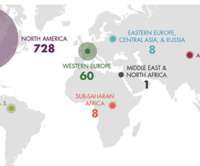Open for comment: Proposed changes to Candid’s taxonomy
Candid
JUNE 5, 2023
All this work would be significantly more difficult if it weren’t for Candid’s taxonomy, the Philanthropy Classification System (or PCS). A taxonomy is simply a system of classification, or a way of organizing things. This year, Candid is updating its taxonomy.















Let's personalize your content